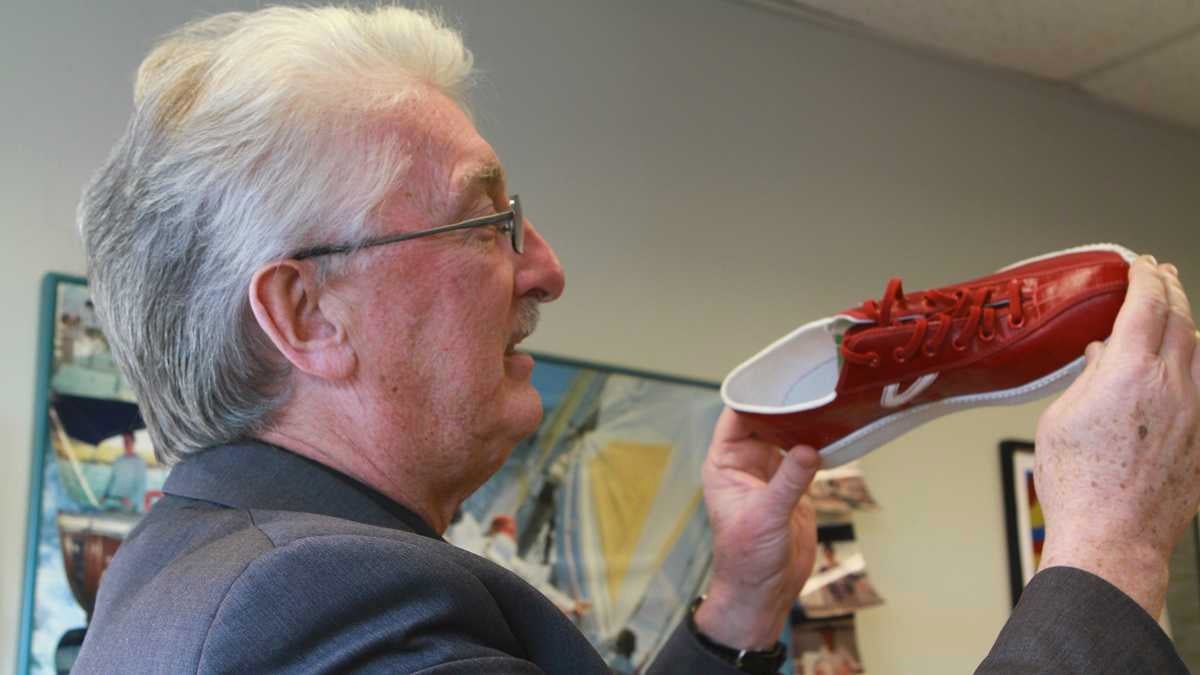A UD green chemist turns chicken feathers, soybeans into renewable building material
Listen
Richard Wool holding a sneaker made of "eco leather" developed from materials created in his lab. (Image courtesy of Dawn Fiore
In this edition of So, What Do You Do?, Shoshana Martyniak asks UD’s Richard Wool how he makes vegan leather out of chicken feathers.
Soybeans used to make tractor parts? Vegan leather made out of chicken feathers? If that sounds impossible, wait until Dr. Richard Wool tells you about the other amazing renewable materials he and his students are creating at his University of Delaware lab.
Wool, a chemical engineer with a lilting accent from his Irish homeland, is on a mission to devise manufacturing materials without the negative environmental impact of plastics. He manipulates the molecular structure of renewable, biodegradable raw materials like plant fibers, into materials that can be used in a wide variety of everyday items.
“We make a lot of materials, design new materials and processes for reducing the impact to the environment and people’s health,” he says.
Wool says his research in the area of biodegradable plastics began about 25 years ago when two growing environmental concerns converged. Energy conservationists were warning that oil was a finite resource and petroleum based products would only become more expensive and more difficult to obtain. At the same time environmentalists were warning that it was only a matter of time before the planet ran out of landfill space for non-biodegradable plastics, made from petroleum products, used in so many everyday objects.
“We realized with the shortage of petroleum we should look to renewable resources, such as things we could grow in the fields,” says Wool.
“We began the research many moons ago and it really evolved from there,” he says.
As new generations of consumers become aware of the environmental impact of plastics, the demand for materials that are healthier for the environment continues to grow. To keep up with that demand, Wool’s lab is expanding on ways to recreate common materials. His most recent project is an “eco-leather” product.
“Our eco-leather type materials are very suited to things like athletic shoes, ladies’ high fashion shoes and apparel in general.
Wool admits that working on these materials is taking him a little outside his comfort zone. For the first time he and his engineering team have to learn what he calls “Beauty 101.”
“We teach our chemical engineers how to make fabulous high performance composite materials that you can go to the moon on,” he says. “But there is this twist, this aesthetic that we have to impart on our materials, such that when a designer looks at it they go ‘Wow, gotta have that.'”
If things go as Wool plans, eco-leather created at his lab will soon be strolling down a catwalk near you.
WHYY is your source for fact-based, in-depth journalism and information. As a nonprofit organization, we rely on financial support from readers like you. Please give today.



